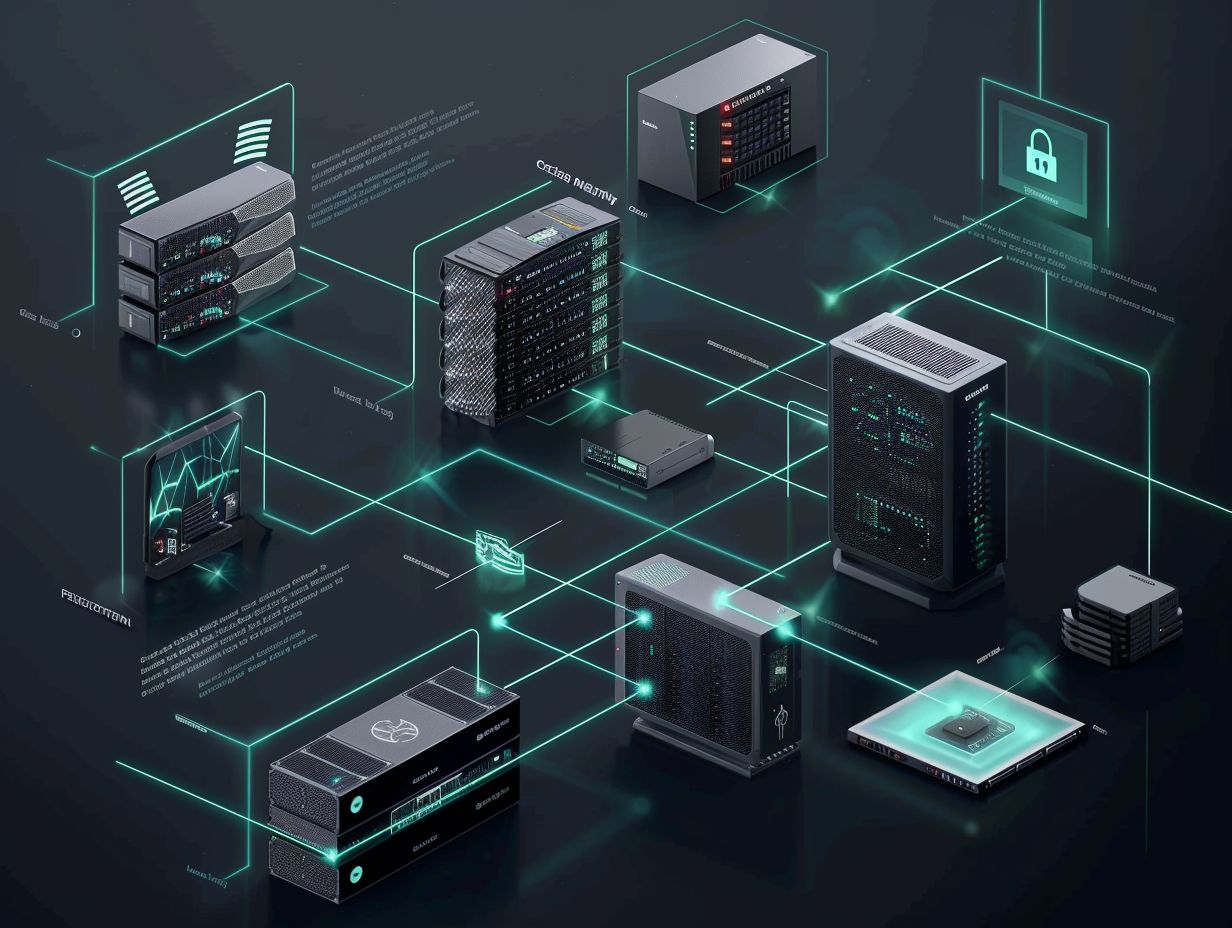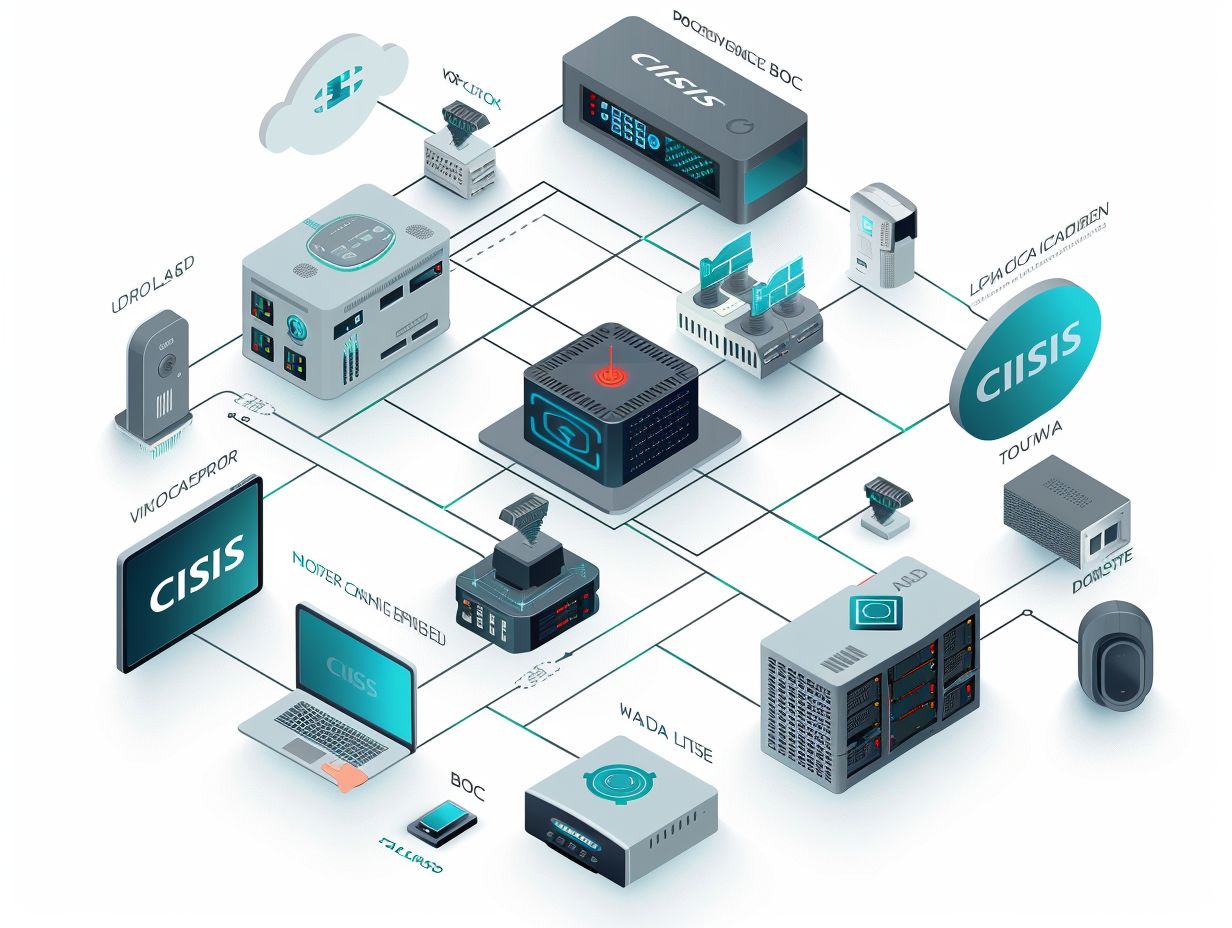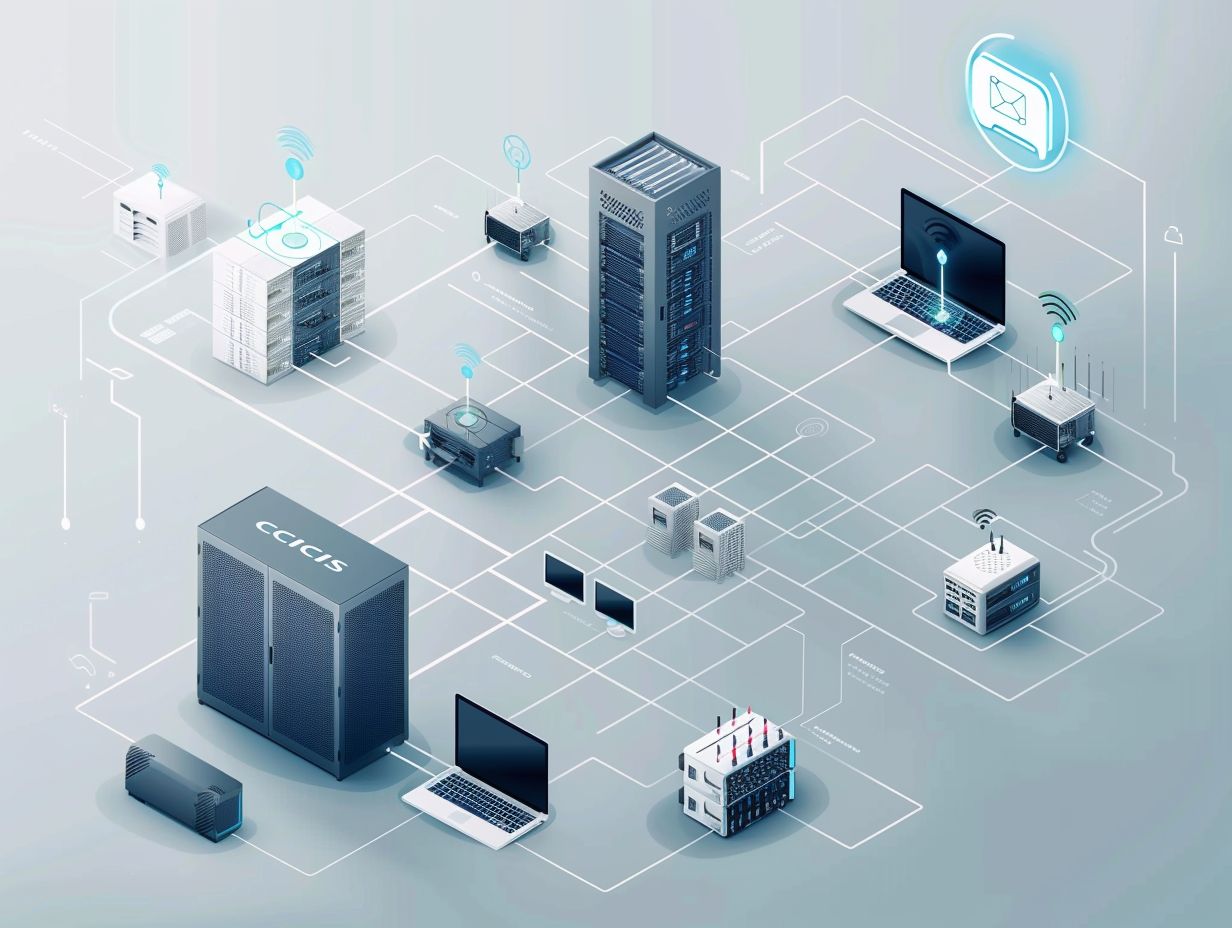In today’s digital age, cybersecurity is more important than ever. As a leader in networking and security solutions, Cisco offers a comprehensive approach to securing networks, data, and applications.
You can explore the key components of Cisco’s security architecture, which include network security, cloud security, endpoint security, and application security. By implementing Cisco’s security solutions, you can benefit from improved threat detection and prevention, streamlined management, and automation.
Gain insights on successfully implementing and maintaining Cisco’s security architecture with best practices like regular updates, audits, and ongoing training. Discover more about Cisco’s approach to security and how it can benefit your organization.
Key Takeaways:

Overview of Cisco’s Approach to Security
Your approach to security at Cisco includes a multi-faceted strategy that addresses the ever-changing threat landscape with innovative solutions and robust protocols. Prioritizing proactive measures and cutting-edge technologies, you aim to protect networks, devices, and data against cyber threats.
Your commitment to anticipating and mitigating risks is evident through your emphasis on threat prevention. By incorporating advanced security features into your products and services, Cisco aims to offer comprehensive protection against a wide range of potential cyber threats. Your holistic approach not only tackles current security challenges but also anticipates and prepares for future threats, continuously refining strategies to ensure the highest level of security for users.
Key Components of Cisco’s Security Architecture
The key components of Cisco’s security architecture form a comprehensive framework designed to fortify your digital environment and protect against cyber threats. These components include network security, cloud security, endpoint security, and application security, each playing a vital role in ensuring a robust defense mechanism.
Network security focuses on safeguarding your infrastructure and data flowing through networks, using technologies like firewalls, intrusion detection systems, and VPNs to monitor and control network traffic. Cloud security, on the other hand, secures data stored on cloud platforms by implementing encryption and access controls. Endpoint security protects your individual devices and endpoints from malicious attacks, while application security shields your software applications from vulnerabilities and protects them from exploitation by hackers.
When these components work together seamlessly, they create a unified security infrastructure that provides end-to-end protection for your organization.
Network Security
Your network security needs can be addressed with Cisco’s tailored solutions designed to combat the ever-evolving threat landscape. Cisco offers advanced technologies like Zero Trust frameworks and industrial-grade switches to guarantee secure data transmission and efficient access control.
When you adopt Zero Trust principles, Cisco’s innovative approach changes the game in network security. By adhering to a ‘never trust, always verify’ mindset, you can proactively manage and reduce risks from internal and external threats.
In environments where traditional security measures may not be sufficient, industrial switches are essential for securing IoT and industrial settings. Cisco’s integration of these switches provides enhanced visibility and control over network traffic, ensuring the protection of critical systems.
This shift towards comprehensive security not only shields your systems against breaches but also tackles the compliance challenges that organizations encounter in today’s interconnected digital landscape. Cisco’s solutions offer a holistic approach to network security to meet your organization’s security and compliance requirements effectively.
Cloud Security
Cisco’s cloud security solutions provide you with a robust defense mechanism for your organization as you leverage cloud services. They ensure data confidentiality, integrity, and availability within the cloud environment. By combining encryption protocols, access controls, and threat detection mechanisms, Cisco enhances your cloud security posture.
This sophisticated approach enables Cisco to offer you comprehensive protection for your cloud-based assets and applications. Data protection is crucial in safeguarding sensitive information stored in the cloud, preventing unauthorized access, and reducing the risk of data breaches. Compliance with industry regulations is another fundamental aspect, ensuring that your organization meets the necessary standards for data security and privacy.
Visibility into cloud environments allows for proactive monitoring and rapid response to potential security threats, enhancing overall resilience and trust in Cisco’s cloud security offerings.
Endpoint Security

In your organization, endpoint security solutions provided by Cisco offer a diverse range of tools and technologies designed to shield devices against emerging threats and vulnerabilities. Through the utilization of advanced threat intelligence and behavior analytics, Cisco ensures a thorough endpoint protection strategy that spans across various environments.
These solutions are essential in effectively protecting endpoints within the current decentralized network environment, especially as employees operate from different locations and devices. Cisco’s strategy not only emphasizes threat prevention but also focuses on rapid detection and response to any suspicious activities. By incorporating threat intelligence, real-time monitoring of potential risks is made possible, while behavioral analytics aid in identifying deviations in device behaviors that could signify a security breach. This proactive approach enables organizations to proactively address cyber threats and uphold a secure network environment.
Application Security
Cisco’s application security solutions focus on safeguarding your critical applications from cyber threats, ensuring data integrity, availability, and confidentiality. Through robust access controls, encryption mechanisms, and threat monitoring, Cisco fortifies your applications against malicious activities.
By proactively identifying and mitigating vulnerabilities, Cisco helps your organization stay one step ahead of potential cyber attacks. Leveraging advanced technologies such as behavioral analytics, machine learning, and intrusion detection systems, Cisco provides you with real-time insights into application security incidents.
Cisco’s continuous monitoring and updating of security protocols ensure that your business can adapt to evolving threats and maintain a strong defense posture. This multi-layered approach underscores Cisco’s commitment to protecting your business-critical applications and preserving the trust of your customers and stakeholders.
Benefits of Cisco’s Security Architecture
Your organization can benefit from Cisco’s security architecture, which offers improved threat detection and prevention capabilities that support proactive risk mitigation and incident response. By utilizing advanced analytics and threat intelligence, Cisco give the power tos organizations like yours to proactively stay ahead of evolving threats.
In today’s rapidly changing threat landscape, this proactive approach to cybersecurity is essential. Cyberattacks are growing more sophisticated and frequent, making it crucial for organizations to have real-time visibility into their network traffic. Cisco’s security solutions enable organizations to quickly and effectively identify and respond to potential security incidents. The integrated security platform provided by Cisco streamlines security operations, allowing organizations to manage their security posture more efficiently and cost-effectively. These capabilities increase overall cybersecurity resilience and readiness, ensuring that organizations can effectively protect their critical assets and data from cyber threats.
Improved Threat Detection and Prevention
One of the key benefits of Cisco’s security architecture is the enhanced threat detection and prevention capabilities that give the power to you to identify and mitigate potential security risks proactively.
By leveraging real-time threat intelligence, Cisco’s solutions continuously monitor your network traffic and endpoints, providing you with a comprehensive view of potential threats. Behavior analytics play a crucial role in detecting anomalous activities and patterns that may indicate a security breach. This advanced technology enables you to stay ahead of evolving cyber threats and take timely action to safeguard your systems.
The automated response capabilities of Cisco’s security solutions help streamline your incident response processes, minimizing manual intervention and reducing response times to security incidents.
Streamlined Management and Automation
Your organization can benefit from Cisco’s security architecture, which provides streamlined management and automation features to simplify security operations, increase efficiency, and facilitate quick responses to security incidents.
This centralized method of managing security allows organizations to effectively monitor and manage security policies throughout the network. By automating regular security tasks like threat detection and incident response, Cisco’s architecture reduces the need for manual intervention and promotes a faster and more efficient security approach. The orchestration of security controls enables smooth integration and coordination among different security tools, enhancing operational efficiency and decreasing response times to potential threats.
Implementing Cisco’s Security Architecture

Implementing Cisco’s security architecture requires a strategic approach that encompasses detailed planning, design considerations, and deployment best practices. You must tailor the implementation process to your specific security requirements and operational needs.
Taking into account the varying nature of threats in today’s digital landscape, it is crucial for organizations to prioritize customization and scalability when implementing Cisco’s security solutions. This involves conducting a thorough assessment of your existing systems and identifying potential vulnerabilities that need to be addressed. By customizing security measures to fit your particular use cases and scaling solutions as needed, you can enhance your overall security posture and effectively mitigate risks. Integration of security solutions into your existing infrastructure plays a vital role in ensuring seamless functionality and minimizing disruptions during deployment.
Steps for Successful Implementation
To successfully implement Cisco’s security architecture, you must follow several critical steps. These steps include conducting a thorough security assessment, defining security policies, configuring security controls, testing the deployment, and continuous monitoring for improvement.
During the security assessment phase, you will need to analyze your existing infrastructure, identify potential vulnerabilities, and assess your current security practices to establish a baseline. Once the assessment is complete, the next step is to define clear and comprehensive security policies that are in line with your business objectives and compliance requirements.
Configuring security controls is another crucial step, which involves setting up firewalls, intrusion detection systems, encryption protocols, and access controls to safeguard your network. Testing the deployment is important to ensure that the security measures are functioning as intended and do not conflict with existing systems.
Ongoing monitoring plays a vital role in detecting and mitigating security incidents, analyzing trends, and responding to emerging threats. This highlights the significance of taking a proactive approach to cybersecurity to ensure the overall security and integrity of your network.
Best Practices for Maintaining Cisco’s Security Architecture
Maintaining your organization’s security architecture requires adherence to best practices, such as regular updates and audits to address emerging threats, vulnerabilities, and compliance requirements. Continuous monitoring, education, and proactive measures are essential for sustaining a robust security posture.
Regular updates are integral to ensuring that security patches are promptly applied to mitigate potential risks. Security audits play a crucial role in identifying weaknesses and gaps in the system, enabling timely remediation.
Implementing training programs for employees on cybersecurity awareness fosters a culture of security consciousness throughout the organization. Proactive security measures, such as multi-factor authentication and network segmentation, can strengthen defenses against evolving cyber threats.
Ongoing education is critical for staying ahead of cybercriminal tactics and technologies, enhancing the organization’s overall security resilience.
Regular Updates and Audits
Regular updates and audits are essential components of maintaining your organization’s security architecture, ensuring that security controls, policies, and technologies are current, effective, and aligned with evolving security requirements.
By regularly updating and conducting security audits, potential vulnerabilities and weaknesses can be identified and addressed promptly. This proactive approach not only enhances the overall cybersecurity posture of your organization but also aids in meeting regulatory compliance standards and reducing the risk of data breaches.
Continuous improvement through updates and audits enables your organization to stay ahead of emerging threats, ensuring that its security measures remain robust and resilient. These practices help in fostering a culture of cybersecurity awareness and vigilance among employees, contributing to a more secure digital environment.
Ongoing Training and Education
Continued training and education are essential for maintaining Cisco’s security architecture. This ensures that security personnel and stakeholders have the most up-to-date skills, knowledge, and insights to address emerging security challenges effectively.
Investing in ongoing training programs allows professionals to remain abreast of the constantly evolving landscape of cybersecurity threats and technologies. This upskilling enables individuals to effectively adapt to new attack vectors and countermeasures. Awareness programs also cultivate a culture of security consciousness within the organization, encouraging proactive risk mitigation strategies.
Obtaining security certifications serves not only to validate one’s expertise but also to showcase a dedication to excellence in security practices. This, in turn, bolsters overall security readiness and response capabilities.
Frequently Asked Questions

What is Cisco’s Security Architecture?
Cisco’s Security Architecture is a comprehensive framework designed to protect the assets and data of an organization, using a combination of hardware, software, and policies to provide a strong defense against cyber threats.
What are the main components of Cisco’s Security Architecture?
The main components of Cisco’s Security Architecture include network security, cloud security, endpoint security, and email security. Each of these components addresses different aspects of security and work together to provide a robust defense.
How does Cisco’s Security Architecture help in preventing cyber attacks?
Cisco’s Security Architecture uses various technologies such as firewalls, intrusion prevention systems, and advanced threat detection to identify and block potential cyber attacks before they can cause harm to the organization’s systems and data.
What is the role of a Systems Engineer in Cisco’s Security Architecture?
The role of a Systems Engineer in Cisco’s Security Architecture is to design, implement, and maintain the security infrastructure for an organization. They work closely with other teams to ensure that all security components are integrated and functioning effectively.
How does Cisco’s Security Architecture provide visibility into network traffic?
Cisco’s Security Architecture includes tools such as network analytics, threat intelligence, and security monitoring to provide real-time visibility into network traffic. This allows for better detection and response to potential threats.
What are the benefits of implementing Cisco’s Security Architecture?
Implementing Cisco’s Security Architecture can help organizations reduce the risk of cyber attacks, protect sensitive data, and ensure regulatory compliance. It also provides cost-effectiveness by streamlining security processes and reducing the need for multiple security solutions.
